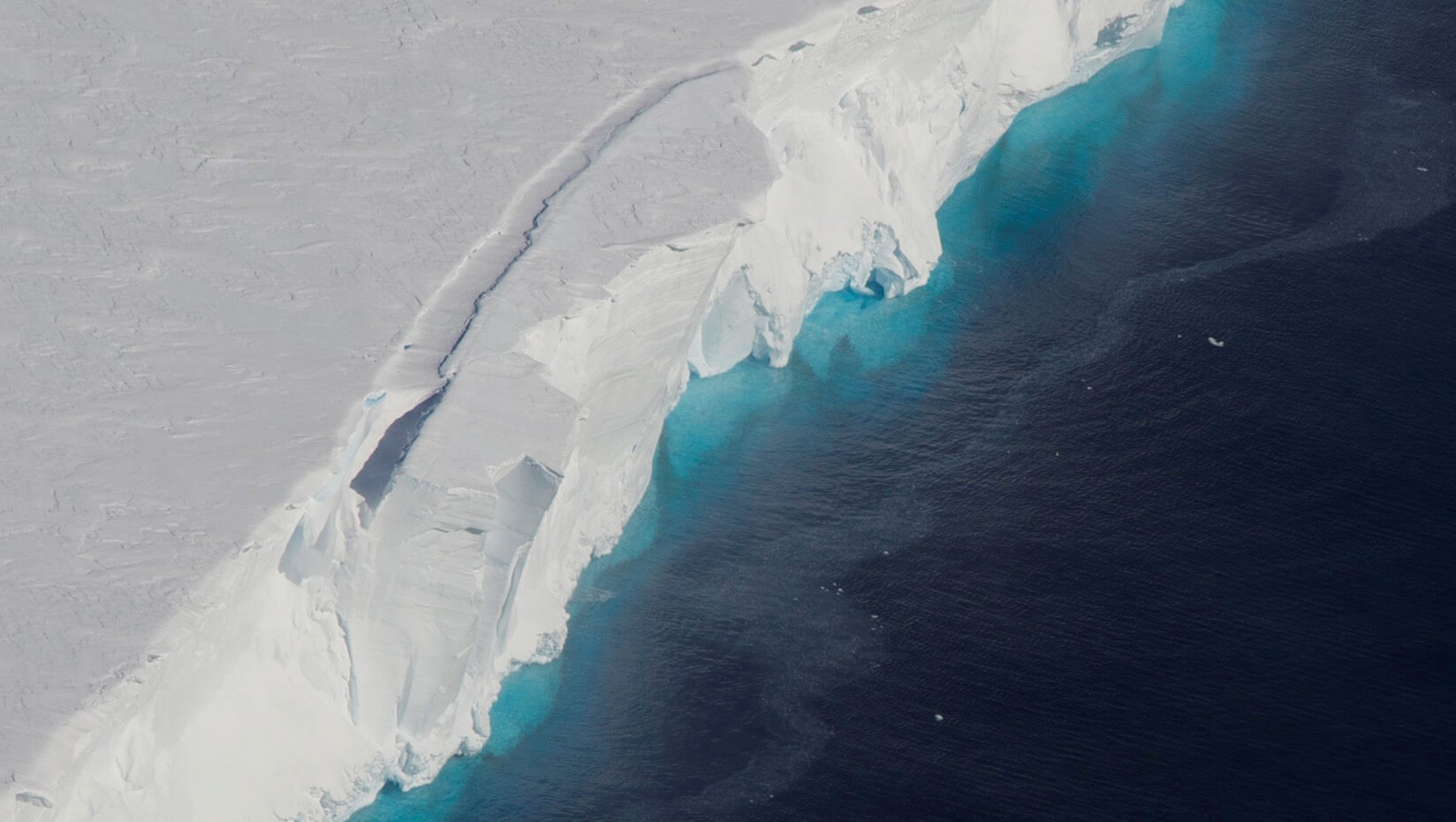
Campbell, Hall part of massive UK-US examination of Antarctic glacier
The Thwaites Glacier in remote West Antarctica is losing 50 billion tons of ice a year and polar scientists say it could collapse within decades.
The resulting rapid sea-level rise would increase vulnerability for 40 percent of the world’s population — approximately 3 billion people — living within 60 miles of the coast. So reducing scientific uncertainty about the likelihood, timing and magnitude of the collapse of West Antarctic glaciers is an international priority.
To understand why the Florida-size glacier’s rate of ice loss has doubled since the 1990s, 100 scientists from world-leading research institutions in the United Kingdom and the United States — including Brenda Hall and Seth Campbell from the University of Maine — will collaborate on a massive $25 million research project.
Researchers say U.K. and U.S. cooperation is key to undertake the scale of scientific study needed to determine what’s happening with the glacier and to plan for adaptations.
The exploration will utilize the most up-to-date instruments and techniques available, from drills that can make access holes 1,500 meters into the ice with jets of hot water to autonomous submarines, including the Autosub known as Boaty McBoatface.
In the U.S., Tulane University is managing one of the projects — Geological History Constraints on Grounding Line Retreat in the Thwaites Glacier system.
Researchers will sample bedrock beneath the ice sheet, identify if and when the glacier retreated in the past, how it recovered, and how it’s currently responding to environmental conditions.
UMaine has a subcontract on this project and Hall and Campbell are co-principal investigators of that $246,565 study.
Hall is a professor in the School of Earth and Climate Sciences and the Climate Change Institute. She explores causes of ice ages and of rapid, millennial-scale climate changes. She also researches the stability of ice sheets.
Campbell is a research assistant professor in the School of Earth and Climate Sciences. He uses geophysics and remote sensing to study dynamical processes, thermal properties and the internal structure of glaciers.
“This research initiative focuses on a critical region of West Antarctica, which is thought to be key to the future existence of the ice sheet. A better understanding of past and present ice behavior in the Thwaites Glacier region will inform our understanding of future sea level, which will have a direct impact on the coast of Maine,” says Hall.
Maine has about 230 miles of coastline/3,500 miles of tidal coastline.
Hall says one concern among the glaciological community is that Thwaites Glacier may already have begun irreversible retreat which, if true, could have devastating effects on global sea level.
“However, there is some suggestion that the glacier may have been smaller in the past and was able to recover from that position, and that retreat is not irreversible,” she says.
“The overall goal of our group’s project is to examine the history of Thwaites Glacier over the past several thousand years to document any evidence of smaller-than-present ice extent and subsequent glacier regrowth.
UMaine researchers will document retreat of the ice from offshore islands, examining the pattern of local sea-level change that resulted from loading and unloading of the crust, as well as use ice-penetrating radar to map subglacial bed geometry and to aid with selection of future drill sites, say Campbell and Hall.
Campbell says the bedrock samples will be collected and analyzed from above and below the current glacier surface to reconstruct changes in ice surface elevation over time.
However, he says, each bedrock sample represents a point measurement potentially in areas that have their own localized weather or longer-term climate patterns not representative of the broader region.
“To minimize this concern, we will use ice-penetrating radar observations to measure ice thicknesses and pick sub-glacial rock sampling sites in areas that are representative of the broader region. Multiple bedrock samples will also be collected for comparison to increase the confidence of our results,” he says.
The Natural Environment Research Council (NERC) and U.S. National Science Foundation (NSF) are funding the nine projects, which represent the largest joint endeavor undertaken by the two nations in Antarctica for more than 70 years.
The complete media release issued by NERC and the NSF is online.
Contact: Beth Staples, 207.581.3777
